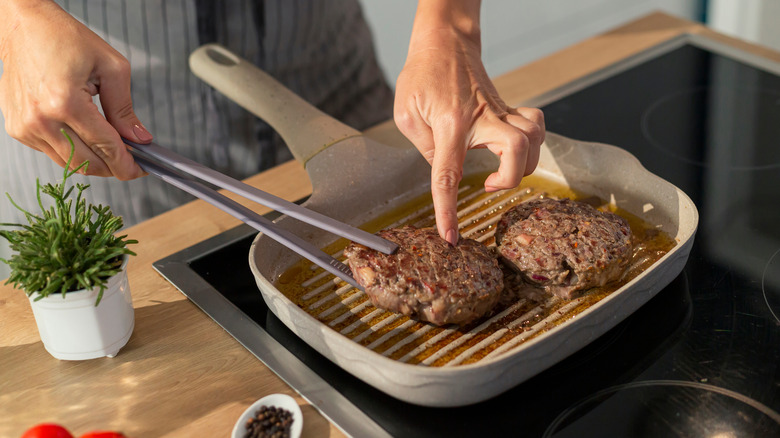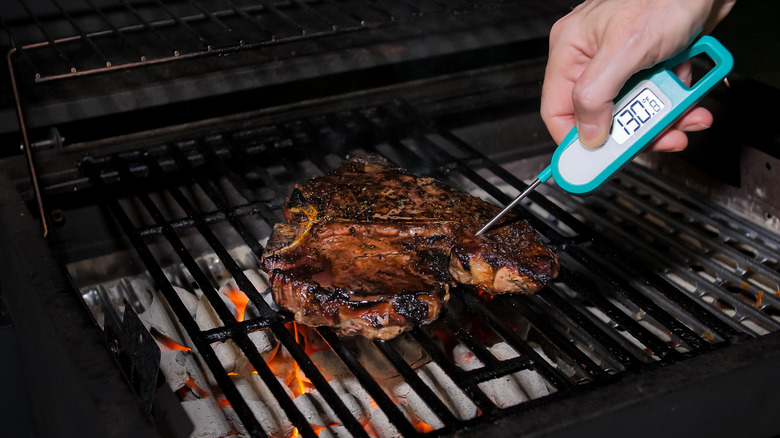Why You Shouldn't Rely On The Hand Trick To Check Meat's Doneness
It would be great if we could be like an old, grizzled chef and use our hands to check how done our meat is. But sometimes things are better in theory than in practice. There is both knowledge and romance in low-tech ways of doing things. Some things in the kitchen, like proofing a load of fresh bread, can only really be done with touch, sight, and smell — tasks where no special tool is coming to help or where the old-school way is quicker and just as good. But there is also a nostalgic glorification of work without technology — the idea that food was more real when people eyeballed everything, even though the cookie dough you measured with a digital scale will come out better every time.
The hand trick is an old-school method, associated with veteran professionals who don't need any fancy tools, passing their well-earned knowledge on to the next generation. It simply involves pressing the meat with your finger and comparing it to how soft the flesh at the base of your thumb feels. With an open hand it will be as soft as rare meat. Touch your thumb to your middle finger and the muscle will tighten and feel like medium-rare. The levels of doneness run all the way down your hand to well done when touching your pinky to your thumb. It has the advantage of being quick and intuitive, but it has disadvantages that make it less than ideal for most home cooks.
A digital thermometer is a better option
Testing the doneness of your meat by poking it might be great if you are in a huge rush, but for most people it is going to be imprecise. Everybody's hand is different, and cuts of meat are often different in how tender they are, even when cooked the same amount. This means it will take a lot of trial and error before you learn how a medium-rare steak feels on touch alone. If you are a professional chef cooking a hundred steaks a day, you can pick up enough experience to be useful, but that is a lot of work for a home cook.
All that work and time might be worth it, but you probably already have access to a better way to check your meat: a digital thermometer. A thermometer will be more accurate than even the most seasoned chef, it only takes a few seconds to use, and if you are the kind of person serious enough about meat to cook hundreds of steaks, you probably already own one. While the thought of being able to poke a New York strip and tell it's done might make you feel like a chef, the hand trick's only real advantage is time, and it doesn't save enough to matter to most people. Instead, do what a real professional does and embrace the tools that do the job easier and better.

